Are you a student? Are you finding the best tours in China for students? Just contact us and join our China student tours from Chengdu, which will surely leave you an unforgettable memory. Our China student tours with panda visit will allow you to appreciate cute giant pandas closely. You can learn more about their history and habits. Besides, you will visit Du Fu Thatched Cottage, Wuhou Shrine Museum, and Leshan Giant Buddha, which will also help you better understand Chinese history and culture. You can also learn about the history of Tibet and Tibetan Buddhism in our China students tours with Tibet. You will visit Potala Palace, Yarlong Tsangpo River, and some of the most prestigious monasteries in Tibet. We devoted to providing the very cost-effective, safe and convenient China tours for students. You can enjoy the beautiful scenery while learning knowledge. Don’t even hesitate and click here to join our tours.

As soon as you arrive in Chengdu, the guide will pick you up at the airport and take you to the hotel to rest. Chengdu is an important central city in Western China and also a world-famous city. Chengdu covers a total area of 14,335 square kilometers. By the end of 2020, the permanent resident population of Chengdu is close to 20.94 million. Many popular attractions are waiting for you to explore.
After breakfast, we will head to visit the Chengdu Research Base of Giant Panda Breeding. It is a research institution for the protection of rare and endangered wild animals such as giant pandas, integrating scientific research and breeding, protection, and tourism. You can see giant pandas at close range here. You may see giant pandas rolling, eating bamboo, climbing trees or sleeping. It is said that the black eyes of giant pandas are smoked by fire. Once, a beauty contest was held in the forest. The panda, the squirrel, the rabbit and the turtle all went. Unfortunately, a fox set a fire on the field, and the turtle was trapped. The squirrel and the rabbit didn’t care when they saw the situation. They just wanted to win the contest. When the panda saw this, he rushed into the fire and rescued the turtle. After being burned by the fire, his eyes and limbs became black.
Then we will drive southwest for nearly thirty-five minutes to the Du Fu Thatched Cottage. It was the former residence of Du Fu, a great poet of the Tang Dynasty (618-907). Du Fu has lived here for nearly four years and created more than 240 poems. Covering an area of nearly 200,000 square meters, the thatched cottage completely retains the original architectural pattern. There are more than 30,000 volumes of various materials and more than 2,000 cultural relics, including the fine engravings, photocopies, manuscripts of Du Fu’s poems in the Song Dynasty (960-1279), Yuan Dynasty (1271-1368), Ming Dynasty (1368-1644) and Qing Dynasty (1636-1912), as well as various printed copies in modern times. Besides, there are foreign translations of 15 languages and more than 120 Chinese engravings published in Korea and Japan.
In the afternoon, you will be transferred to admire the Chengdu Wuhou Shrine Museum, located in the southeast of Du Fu Thatched Cottage, about five kilometers away. Covering an area of 150,000 square meters, it was originally a special temple built in 221 to commemorate Zhuge Liang, also known as Zhuge temple, and later became a joint worship temple for emperors and officials. Zhuge Liang was a statesman, strategist and prime minister of the Kingdom of Shu in the period of the Three Kingdoms (220-265), and he became a symbol of resourcefulness and wisdom in Chinese folklore. It is said that Zhou Yu, a leading adherent of the Wu-kingdom faction, ordered Zhuge Liang to make 100,000 arrows in ten days, but Zhuge Liang promised to finish it in three days. He halted the troops and waited for two days and secretly ordered to prepare twenty large ships, each with a thousand scarecrows. On the third day, the air was filled with heavy fog. Zhuge Liang led his boat to the enemy’s area to beat drums to make a feint. The enemy was afraid of being trapped and ordered archers to shoot arrows in the river. Therefore, Zhuge Liang completed his task as easily as blowing off dust.
Then we will go to Jinli Street, which is a part of Chengdu Wuhou Shrine Museum. It covers an area of more than 30,000 square meters with a total length of 550 meters. You can see many Ming and Qing residential houses here. Besides, many delicious foods are waiting for you to taste, such as Tangyouguozi, Youcha, Qiaomaimian, Boboji. Tangyouguozi is made of glutinous rice, brown sugar and sesame, which is crispy on the outside, and soft on the inside. Youcha refers to a gruel of sweetened, fried flour. Qiaomaimian refers to noodles made of buckwheat. Boboji is made of spicy seasoning and boneless chicken slices, which tastes spicy and fragrant.


This morning, you will be escorted to visit Leshan Giant Buddha. The Buddha is located in the south of downtown Chengdu, about 150 kilometers. It takes us about an hour and forty minutes to drive there. Leshan Giant Buddha is a seated statue of Maitreya Buddha, 71 meters high. It was first excavated in 713 and completed in 803, which lasted about 90 years. Besides, it is the largest cliff inscription in China. You can take a ship to take a panoramic view of the Buddha. You will find that every part of the Buddha is huge. Even his feet can accommodate hundreds of people to sit on it.
After lunch, we will drive northwards for nearly two hours to Huanglongxi Ancient Town. It is a small tourist town with tourism as the main industry and business service industry as the supplement. With a history of more than 1,700 years, you can still see many ancient buildings here, including seven blocks of Ming and Qing Dynasties, 76 Ming and Qing residential houses, 6 ancient banyan trees over 300 years old, 3 well-preserved temples. Besides, if you are lucky, you can experience ancient customs here, such as sounding the night watches, freeing captive animals, dragon boat racing, and burning fiery dragons. Everything here will give you a unique memory.
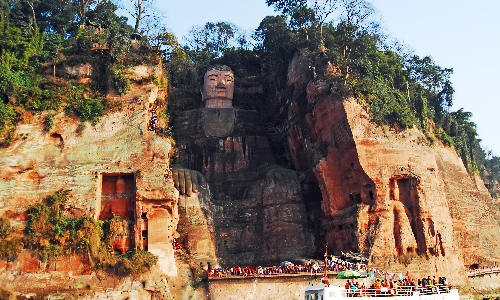
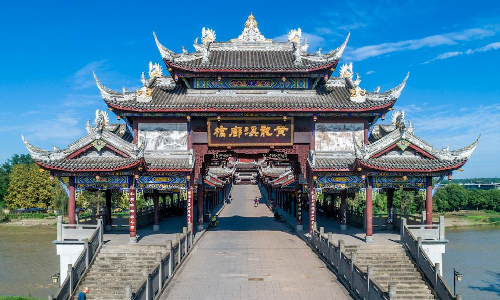
 Lhasa
Lhasa Today you will be escorted to the airport to take the estimated flight CA4445 13:40/16:05 to Lhasa. Lhasa, also known as Sunshine City, is the capital of the Tibet Autonomous Region. The total area of the city is 31,662 square kilometers. By the end of 2020, the permanent resident population of Lhasa is 867,891. Lhasa is located in Southwest China, the middle of the Tibetan Plateau and the north of the Himalayas. It is not only the political, economic, cultural center of Tibet, but also the holy land of Tibetan Buddhism. Its altitude is 3,650 meters, and the sunshine time is more than 3000 hours throughout the year.
On the way to the hotel, we will see the Yarlong Tsangpo River. It is the longest plateau River in China and one of the largest rivers at the highest altitude in the world. It originates from the north foot of the Himalayas in southwest Tibet. The Yarlong Tsangpo River is rich in water energy reserves, second only to the Yangtze River in China. The Yarlong Tsangpo River Grand Canyon at the turn of the Yarlong Tsangpo River is the largest canyon in the world, and is also considered to be the deepest and the longest canyon in the world.
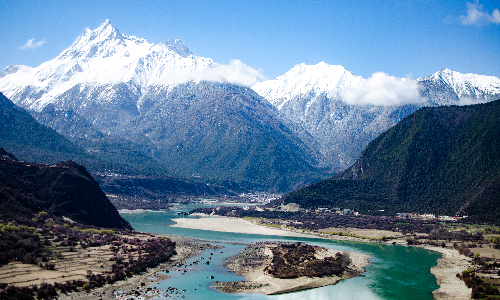
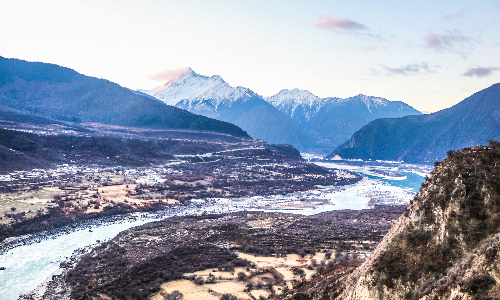
In the morning, you will go to the Tibet Museum (closed each Monday), which is located in the western suburb of Lhasa, about nine kilometers away. It came into play in October 1999 on the occasion of the 40th anniversary of Tibet’s democratic reform, and it is the first modern museum in Tibet. The Museum covers a total area of 53,959 square meters, and the exhibition hall covers an area of 10,451 square meters. You can visit the preface hall, the main exhibition hall and the cultural relic warehouse. In addition to prehistoric cultural relics such as stone axes and stone chisels, you can also appreciate statues of Buddha and Bodhisattva, handwritten Tibetan classics, colorful Thangkas, and various musical instruments, worship implements and other handicrafts with distinctive national characteristics.
Then you will be escorted to the Potala Palace, located on the Maburi Mountain in the northwest of Lhasa. It is a palace-style complex. It was originally built in the 7th century by Songtsen Gampo to marry Princess Wencheng. After reconstruction in the 17th century, it became the residence of the Dalai Lamas and the center of religion and politics in Tibet. And in 1994, it was listed as a world cultural heritage. Its main buildings are divided into the White House and the Red Palace. It is said that when Princess Wencheng married Songtsen Gampo, she brought pagodas, scriptures and Buddha statues into Tibet, and later built two famous temples. Since then, Buddhism had spread in Tibet. She also taught people to plant corn, potatoes, broad beans and rape and other crops. And wheat has finally mutated into barley. Princess Wencheng also brought cars, horses, mules, camels and related production technology and medical works, which promoted the local social progress.
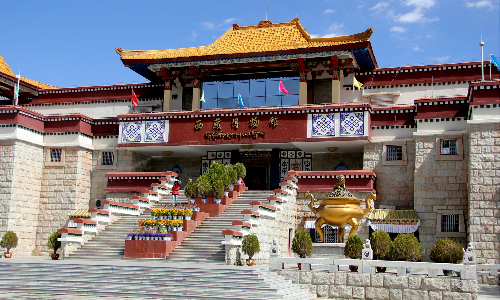

Today’s first attraction is Drepung Monastery. It is located in the western suburb of Lhasa and was founded in 1416. It used to have more than 10,000 monks. With 141 manors and more than 540 pastures, it is the largest Tibetan-Buddhist monastery. Drepung Monastery has a lot of religious activities every year. Relevant activities are held on every important Buddhist day and the 15th and 30th of the Tibetan calendar, among which the biggest is held at the Sho Dun Festival. Sho Dun Festival means “yogurt banquet” in Tibetan, which was originally a religious activity, and now has become one of the largest festivals in Lhasa. If you are lucky, you can watch Tibetan opera, yak racing and equestrian performances, as well as enjoying local food with local people.
After lunch, you will go to visit the Sera Monastery. Built in 1419, it has been the place where monks and living Buddhas expound the texts of Buddhism. It is located in the northern suburb of Lhasa, and it is surrounded by willows. Besides, there are many small monasteries around the temple, such as Abbey Pub and Gombasa Temple. In its prime, it had more than 8,000 monks, slightly less than that of Drepung temple. And it is home to tens of thousands of Buddhist statues. The most famous statue is the Hayagriva in the main hall, an incarnation of Guanyin Bodhisattva, which helps practitioners overcome demons and obstacles. Besides, a large number of original color murals are preserved on the walls of the main hall and the Datsan Scripture Hall.
Then, we will head to Norbulingka, which means a precious garden, also located in the western suburb of Lhasa. Founded in the 1840s, it is the place where the Dalai Lamas take a summer holiday and handle affairs. It covers an area of 360000 square meters, with more than 100 kinds of plants in the garden, including not only common flowers and trees in Lhasa, but also exotic flowers and plants from Himalayas, as well as rare flowers transplanted from other parts of China or introduced from abroad. With 374 rooms, it is the largest garden with the best scenery and the most historic sites in Tibet.

 Beijing
Beijing Today you will take the estimated flight SC6005 10:00/13:35 to Beijing. Beijing is the capital of China, with a total area of about 16,411 square kilometers. By the end of 2020, Beijing has a permanent resident population of more than 20 million. Beijing is surrounded by mountains on three sides, and the southeast is a plain slightly tipped towards the Bohai Sea. In addition to diverse historical attractions, you can enjoy delicious local foods here, such as Beijing roast duck, fermented soya-bean milker, candied haws, and lvdagunr (glutinous rice rolls with sweet bean flour).
After breakfast, you will pay a visit to Tian’anmen Square, located in the center of Beijing. It is 880 meters long and 500 meters wide. It covers an area of 440,000 square meters and can accommodate 1 million people to hold a grand gathering. You can find the national flag pole, the Monument to the People’s Heroes and the Chairman Mao Memorial Hall stand along the central axis of Beijing in the square. It is a must-see attraction in Beijing. You can take photos in the square and share them on your Facebook, which will surely earn many likes for you.
The Forbidden City (closed on Monday) is located in the north of Tian’anmen Square. It only takes more than ten minutes to walk there. It used to be the imperial palace in the Ming and Qing Dynasties. It covers an area of about 720,000 square meters, with more than 70 palaces of different sizes and more than 9,000 houses. Walking into the Forbidden City, you can find more than 300 large copper vats, of which 22 are gold-plated. These vats are used for firefighting. They are usually filled with water. From October to February of the next year, they will be covered with cotton cloths. When the air temperature is low, charcoal will be heated under the tanks to avoid freezing.
After lunch, we will go to the Temple of Heaven, which is in the south of Beijing. Built in 1420, it used to be a place for emperors to worship Heaven and pray for good harvests in Ming and Qing dynasties. The Hall of Prayer for Good Harvests is one of main buildings here. It has 28 golden Phoebe columns, which are arranged circularly. Four columns in the very middle, symbolizing the four seasons, support the upper eave; 12 columns in the middle, symbolizing the 12 months of the year, support the eave of the second floor; and the outer 12 columns, symbolizing the 12 hours of the day, support the eave of the third floor.
The next attraction is the Summer Palace, located in the western suburb of Beijing, 15 kilometers away from the urban area. It used to be a royal garden in the Qing Dynasty. It covers an area of about 3 square kilometers, and about three-quarters are waters. The Long Corridor is a popular scenic spot in Summer Palace. It is located at the south foot of Longevity Hill and facing Kunming Lake. 728 meters long, it is the longest corridor in Chinese gardens. And it was recognized as the longest corridor in the world in 1992 and listed in the Guinness world record. There are color paintings on each beam on the corridor, with a total of more than 14,000 paintings, including landscape, flowers, birds, fish, and figures. And figure paintings are all based on Chinese classical masterpieces.

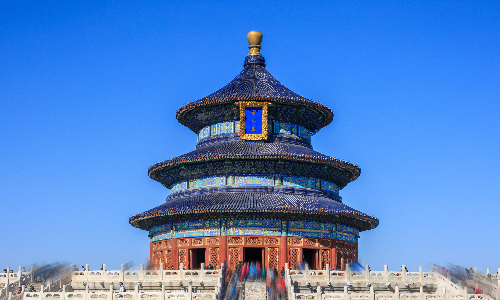
Today we will go to Hutong. Hutong is also one of the places you must go to in Beijing. It refers to the smaller street between the main streets in towns or villages, which leads to the interior of residential areas. The residential areas located on both sides of Hutong are usually Siheyuan, quadrangle dwellings. You will take a rickshaw to visit Hutong and you are allowed to visit a local family. You can learn more about Chinese family culture through talking with family members. Maybe the elder of the family you visited used to be an imperial bodyguard or an imperial chef.
After enjoying lunch in a local restaurant, you will be transferred to Mutianyu Great Wall, about 75 kilometers away from Hutong. We will drive northwards for about 1 hour and 30 minutes. With a total length of 5,400 meters, Mutianyu Great Wall is the longest section of the Great Wall in China. And its vegetation coverage rate is more than 90%. You can choose to go up and down by cable car or chairlift, or you can go up by chairlift and down by the toboggan. You will be deeply impressed if you take a panoramic view of the Mutianyu Great Wall.
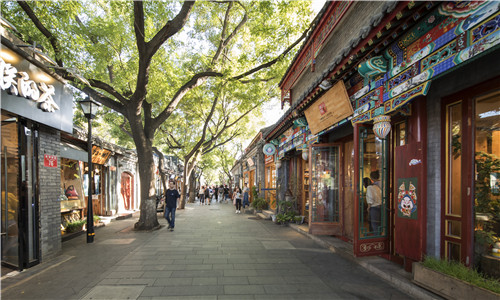
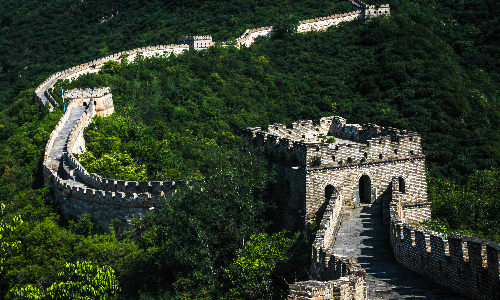
Today your China student tours from Chengdu will come to an end. We sincerely hope you have a good time here. Our guide and driver will take you to the airport and help you board the flight. If you are satisfied with our service, you can choose another tour of our company.
Author: Zhang Xuelei
| City | Five Star hotel list | Four Star hotel list |
|---|---|---|
| Chengdu | Sofitel Chengdu Taihe | Holiday Inn Express Chengdu Jinniu |
| Lhasa | Shangri-La Hotel, Lhasa | Thangka hotel |
| Beijing | Sunworld Dynasty Hotel Beijing Wangfujing | Sunworld Hotel Wangfujing |
 |
![]() About your child or infant, please contact us for a discounted price.
About your child or infant, please contact us for a discounted price.



We started with a few days in Beijing & ended in Shanghai, from where we visited the Forbidden City and Great Wall. In between we visited Terra Cotta Warriors Museum, Panda Base, Shanghai Disneyland.

We had a wonderful holiday in China which will remain long in the memory. China is a breathtakingly beautiful country full of splendid temples and palaces, mountains and rivers, peaceful rural scenes and bustling shopping streets.
 QUICK ENQUIRY
QUICK ENQUIRY